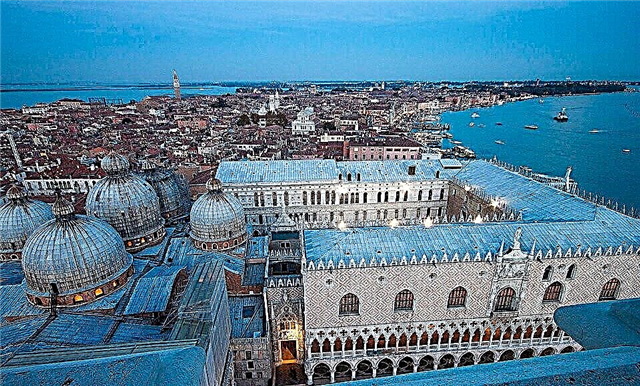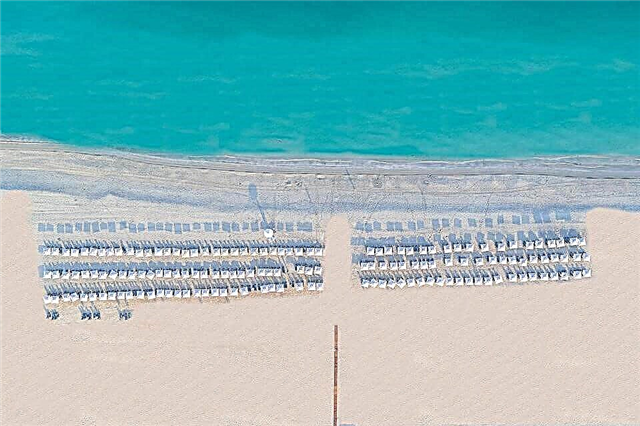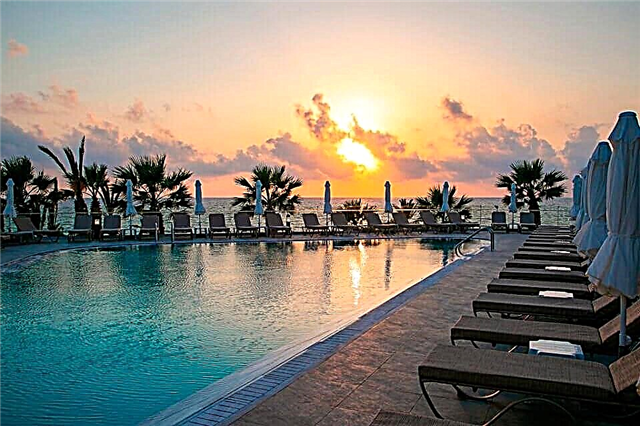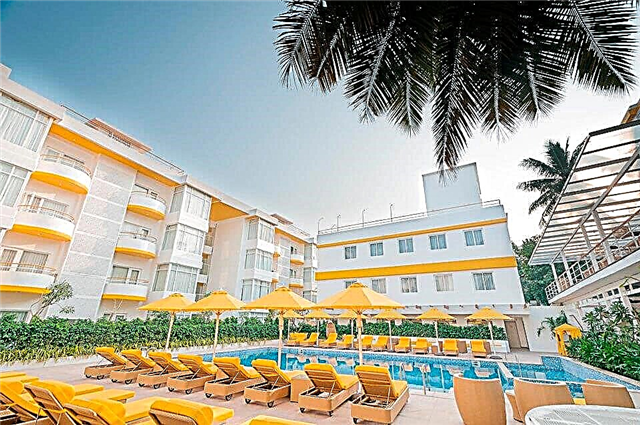The capital of Lower Saxony, Hannover is a kind of all-German exhibition center, the musical capital of Northern Germany and one of the country's economic centers. During the Second World War, the historical part of the city was badly damaged, and was not fully restored. The borders of Old Hanover have been greatly reduced, some buildings have been remodeled elsewhere. But what is left is enough for a curious and inquisitive tourist.
Hannover hosts several world-class events every year, attracting thousands of guests and participants. Among them are the Violinale violin competition and the Hannover Messe industrial fair. The city is also known for the fact that the great German scientist-mathematician Gottfried Leibniz lived on its territory for a long time.

The best hotels and hotels at affordable prices.
from 500 rubles / day
What to see and where to go in Hanover?
The most interesting and beautiful places for walking. Photos and a short description.
New town hall
A large-scale monumental structure, skillfully imitating the architectural style of the Middle Ages. The town hall was opened at the beginning of the 20th century in the presence of Kaiser Wilhelm II. The building was erected in a swampy area, so more than 6 thousand strong piles had to be driven into the ground to support and protect the foundation. The New Town Hall is considered the most beautiful historical building in Hanover.

Old town hall
An architectural monument of the first half of the 15th century, where the city council of Hannover met, headed by the burgomaster. The building served as the residence of the city authorities until the middle of the 19th century, when the New Town Hall appeared. After the move of the municipal council, they were going to demolish the Old Town Hall, but the townspeople protested against this decision. As a result, the building was abandoned, and now it decorates the central area of the city.
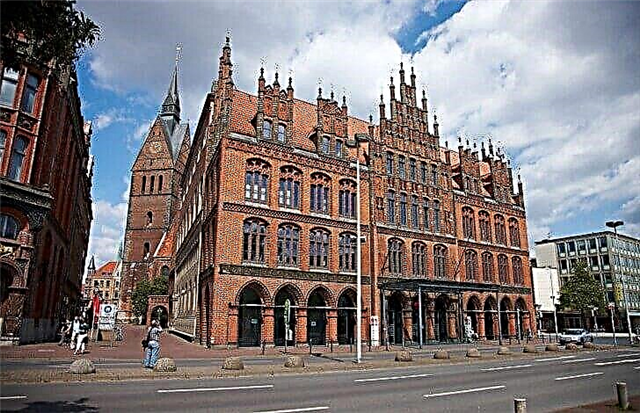
Tourist route "Red thread"
A route designed especially for tourists and covering the most important sights of Hanover. In order for the guests of the city not to get lost among the streets and squares, a red line was drawn on the sidewalks, pavements and roads. The "Red Thread" begins at Ernst August Square and passes by the buildings of the Old and New Town Halls, several churches, an opera house, and a park and garden complex. The total length is 4.2 km.

Kröpke watches
One of the symbols of Hanover, which is often depicted on souvenir products. The clock was installed at the end of the 19th century on the square of the same name, where the townspeople gladly made appointments and appointments. It is believed that if the wedding cortege of the newlyweds stands in front of the clock for more than five minutes, then the couple is guaranteed a long, happy and strong marriage.

Lower Saxony State Museum
The museum exposition consists of four sections, where paintings, sculptures, archaeological and ethnographic collections are presented. The museum was founded in the middle of the 19th century at the initiative of local art and historical societies. The art gallery exhibits canvases of the 11th-20th centuries, collected from all over Europe. There are works by Botticelli, Picasso, Rembrandt, Malevich and other great artists.

Sprengel Museum
Museum of Contemporary Art, which is considered one of the best in Europe. It was created on the basis of the private collection of the family of the chocolate industrialist B. Sprengel. As permanent exhibits, you can see canvases by Chagall, Munch, Christo, Malevich, Klee, Schwitters, Leger and other equally worthy representatives of modern painting.

August Kestner Museum
An exposition dedicated to the history of the Ancient World and covering the time period from the fourth millennium BC. - before the Roman Empire. The museum contains rich collections of sculptures, reliefs, amulets, papyri, coins. Artifacts from the history of the early Middle Ages are exhibited in separate rooms. The museum was named after the German diplomat, archaeologist and explorer Georg Kestner.

Wilhelm Busch Museum
Museum of Satirical Art, the main exposition of which is dedicated to the work of the German cartoonist Wilhelm Busch. Here you can also admire the works of other masters of this genre: P. Weber, T. Heine, O. Daumier, W. Hogarth. The museum has a large collection of graphic drawings - prototypes of modern comics. The exposition is located in the building of the St. George Palace in the very center of Hanover.

Market church
The temple is located on the main square of Hanover, its full name is the Church of St. George and Jacob. Together with the building of the Old Town Hall, it forms a harmonious and picturesque architectural ensemble of the Market Square. The temple was built in the XIV century, the main architectural style is German Gothic. Near the church there is a monument to M. Luther, the founder and irrepressible inspirer of the church Reformation.

Church of Saint Egidius
The temple was first mentioned in the XII century, but a full-fledged church on the site of an old Romanesque basilica was built in the XIV century. For many centuries, the church served the inhabitants of Hanover until it was destroyed during the Second World War. Only the bell tower and the outer frame survived. The church was not rebuilt, and now its ruins serve as a reminder of those terrible times.

Opera theatre
The main theater stage in Lower Saxony. The Red Mile tourist route runs through the theater building. The theater was built in the middle of the 19th century according to the design of the court architect G. Laves. In 1943, the building was completely burned down as a result of hostilities. The new theater was built in the 50s. XX century. Nowadays, the stage has received the status of the state theater of Lower Saxony.

Leibniz House
Reconstruction of the house of the great German mathematician and philosopher G.V. Leibniz, in which the thinker spent 18 years of his life. The original building was destroyed during the bombing of Hanover during World War II. The exposition of the house-museum is devoted to the life and scientific activity of the mathematician. Part of the building belongs to the University. Leibniz.

Bank headquarters NORD LB
A huge modern building with an unusual futuristic design, occupying 40 thousand square kilometers. The building was built for the local land bank and instantly turned into a city landmark. Separate blocks of the building are connected by transparent corridors in the form of pipes, the whole structure vaguely resembles a collapsed Rubik's cube.

Hanover train station
Hanover is a large and important railway junction, which is why its city station has a large capacity. More than 250 thousand people pass through the station every day. On the square in front of the station, a monument is erected in honor of Ernst-Augustus I, one of the revered rulers of Lower Saxony. This king is considered "the father of the country and the people."

AVD-Arena
The main sports arena of the city, one of the largest stadiums in Europe. The building was built in the middle of the 20th century, almost immediately it became the home arena for the Hannover 96 team. Many matches of the European and world football championships, as well as the finals of the German national cups have been played here. The Rolling Stones, Michael Jackson and Madonna performed at the AVD-Arena.

Royal gardens of Herrenhausen
Landscape park ensemble in the historic part of Hanover. The complex includes four gardens: Georgievsky, Bolshoi, Gorny and the Garden of the Guelfs. The royal gardens were created thanks to the wife of the ruler Ernst-August, Princess Sophia.The park is one of the most outstanding and worthy examples of 18th century Baroque landscape art.

Lake Mash
An artificial lake created at the site of the bolt in the 1930s. The design of the reservoir was developed during the time of the Weimar Republic, but its implementation was carried out already under Hitler. The Nazis actively developed a culture of public health activities that strengthen the health of the German nation. Lake Mash, according to their idea, was to become one of the places of mass recreation of the townspeople.

Serengeti Park
Amazing safari park in the vicinity of Hanover, named after the famous African nature reserve "Serengeti". The territory is divided into four thematic zones: the world of water, the world of monkeys, the world of animals, the world of entertainment. The park's open enclosures contain lions, cheetahs, giraffes, monkeys, antelopes, rhinos and other exotic representatives of the African fauna.
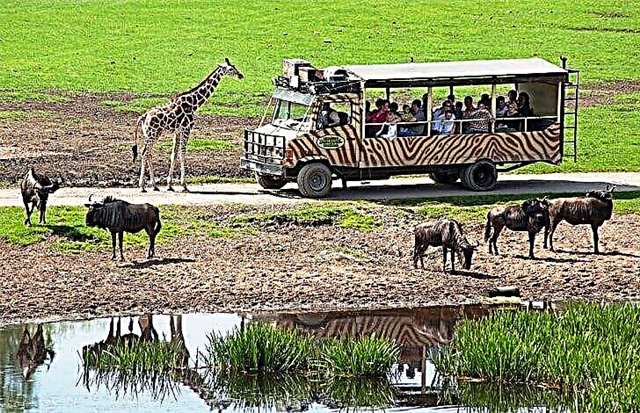
Hanover Zoo
A zoo where visitors can not only watch the life of animals, but also visit interesting theatrical performances. Almost all zoos in progressive Europe implement the concept of keeping animals in conditions as close as possible to their natural environment. Hanover on this way did not make an exception - the wards of the zoo live in spacious open-air cages and freely walk around the territory.

Hanover Fireworks Festival
An annual international fireworks festival that has taken place in the city for the last couple of decades. Teams from all over the world come here to demonstrate their "incendiary" art. The festival has become so popular that tickets for this grand spectacle are sold out in advance. The action takes place on the territory of the royal gardens of Herrenhausen.



